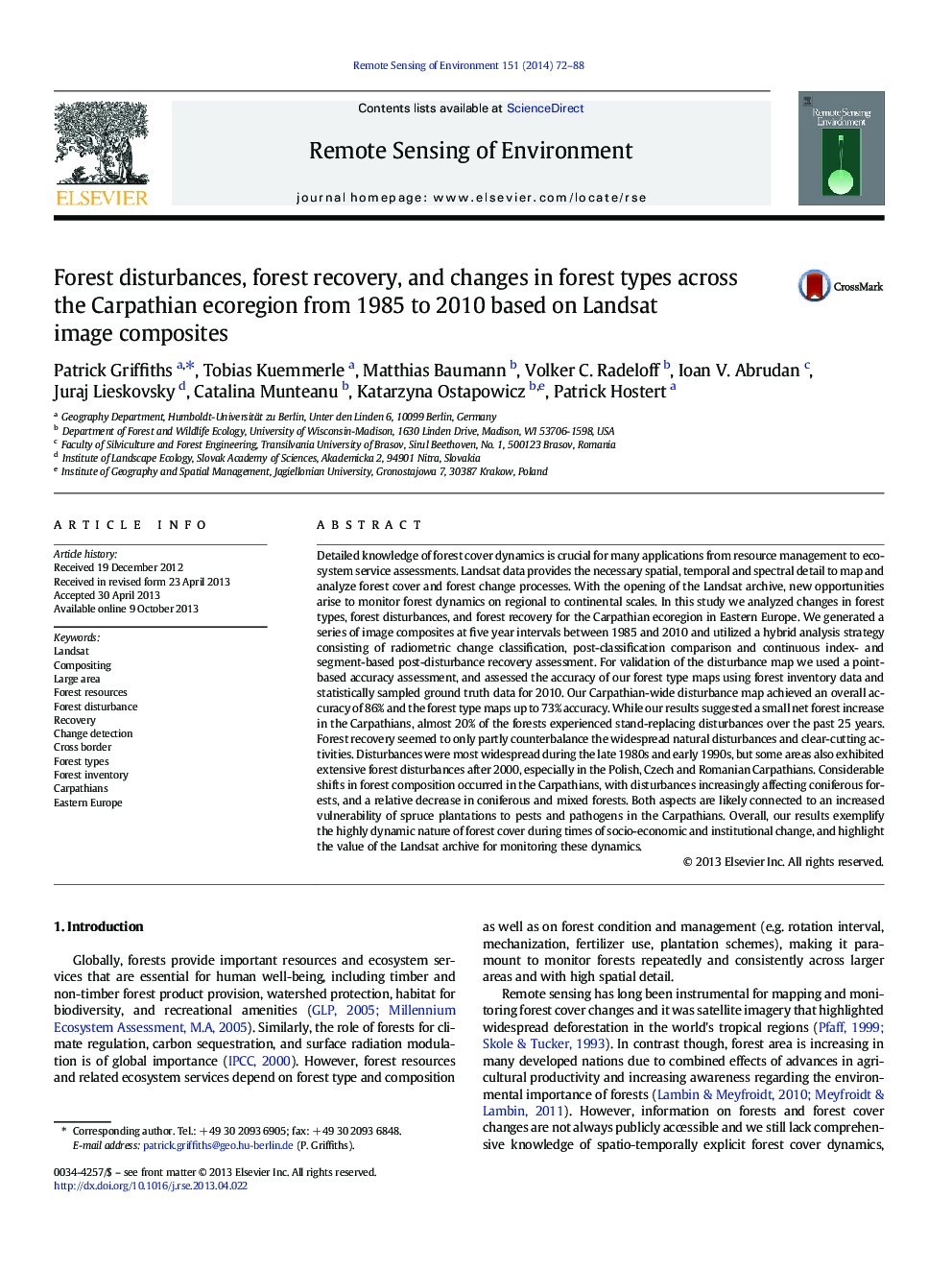| Article ID | Journal | Published Year | Pages | File Type |
|---|---|---|---|---|
| 4458874 | Remote Sensing of Environment | 2014 | 17 Pages |
•Regional monitoring of forest dynamics with Landsat has recently become feasible.•We analyzed six large-area composites employing a hybrid change detection approach.•We addressed forest types, disturbances and recovery in the Carpathians since 1985.•Forests increased slightly while 1/5 of Carpathian forests experienced disturbances.•Disturbances increasingly occurred in conifers, forest composition shifted markedly.
Detailed knowledge of forest cover dynamics is crucial for many applications from resource management to ecosystem service assessments. Landsat data provides the necessary spatial, temporal and spectral detail to map and analyze forest cover and forest change processes. With the opening of the Landsat archive, new opportunities arise to monitor forest dynamics on regional to continental scales. In this study we analyzed changes in forest types, forest disturbances, and forest recovery for the Carpathian ecoregion in Eastern Europe. We generated a series of image composites at five year intervals between 1985 and 2010 and utilized a hybrid analysis strategy consisting of radiometric change classification, post-classification comparison and continuous index- and segment-based post-disturbance recovery assessment. For validation of the disturbance map we used a point-based accuracy assessment, and assessed the accuracy of our forest type maps using forest inventory data and statistically sampled ground truth data for 2010. Our Carpathian-wide disturbance map achieved an overall accuracy of 86% and the forest type maps up to 73% accuracy. While our results suggested a small net forest increase in the Carpathians, almost 20% of the forests experienced stand-replacing disturbances over the past 25 years. Forest recovery seemed to only partly counterbalance the widespread natural disturbances and clear-cutting activities. Disturbances were most widespread during the late 1980s and early 1990s, but some areas also exhibited extensive forest disturbances after 2000, especially in the Polish, Czech and Romanian Carpathians. Considerable shifts in forest composition occurred in the Carpathians, with disturbances increasingly affecting coniferous forests, and a relative decrease in coniferous and mixed forests. Both aspects are likely connected to an increased vulnerability of spruce plantations to pests and pathogens in the Carpathians. Overall, our results exemplify the highly dynamic nature of forest cover during times of socio-economic and institutional change, and highlight the value of the Landsat archive for monitoring these dynamics.
